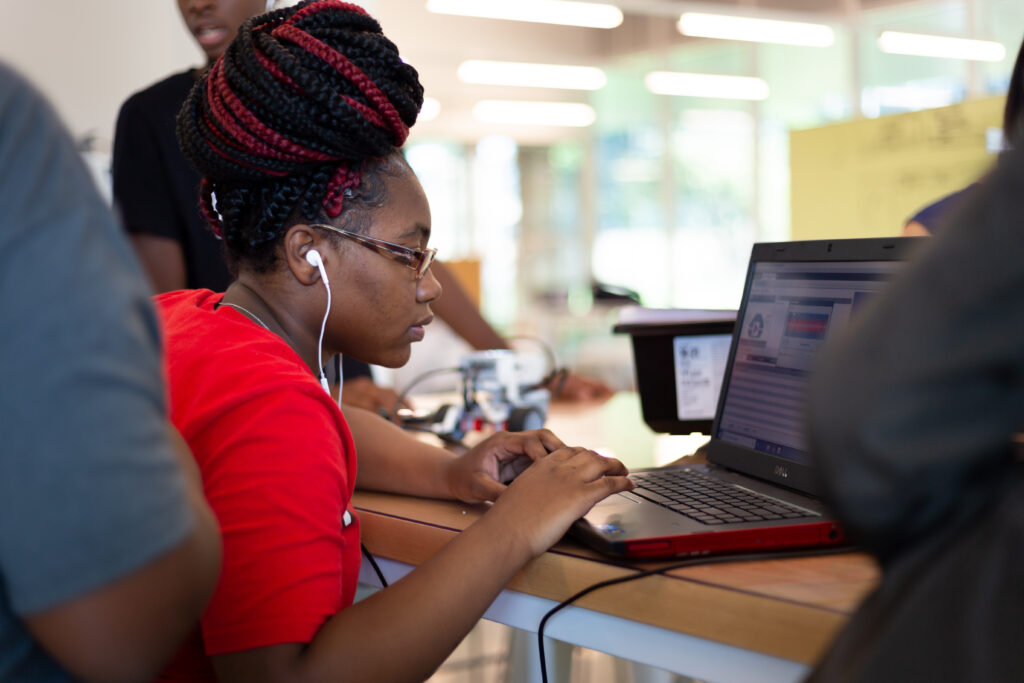Storyboarding

Bloom's Level
Use
Setting
Activity
Technology
Related Strategies
No related strategies found.
Description
Storyboarding in computer science is a pre-programming strategy where students visually map a program’s algorithm. Storyboarding helps students to write clear, well-structured computer programs. Block-based programming languages, such as Scratch, lend themselves well to planning programs using storyboards. Teachers often provide six to ten square templates or index cards for students to plan the steps and screens for their programs. Taking time to pre-plan programs by storyboarding can reveal potential problems for students to address before writing code. The process of storyboarding provides a mental model of programs and helps to streamline the programming process.
When To Use It
As a learning strategy, use storyboarding when you want students to:
- flesh out their ideas for a computer program
- plan their algorithms in a visual format
- examine their algorithms for potential problems before writing code
- map out each screen of their program to clarify and evaluate its structure
As an instructional strategy, use storyboarding when you want to:
- help students develop their programs individually or in groups
- evaluate the structure of students’ programs before they begin to write code
- provide a visual alternative to pre-planning a program or algorithm
- uncover and address misconceptions and errors in program design
How To Use It
Advance Prep
- Identify the goal, task, or purpose of the programming challenge.
- Create or identify a storyboard template for students to use for pre-planning their programs.
- Plan to model how to map out a programming idea using a storyboard template or index cards.
- When you plan the programming project, consider:
- decomposing the storyboard planning into smaller chunks so that students do not get overwhelmed.
- using storyboards only for specific tasks/screens within a program if the programming task is complex.
- alternating between short planning and coding activities if the planning period may be time-consuming.
- showing students how storyboards can be used to draft formal programming language.
Implementation
- Introduce students to the planning activity and explain the purpose and benefits of pre-planning a computer program.
- Model how to represent an algorithm or program screens using a storyboard template or index cards.
- Provide students with the storyboard template and have them work individually or in small groups to plan their programs.
- Check in with students and ask probing and clarifying questions to help them refine their ideas.
Pros
- Saves time during the programming process
- Helps to reveal problems in the structure or algorithm of the program before writing code
- Helps to visualize and communicate an idea for a program
- Increases the overall quality and effectiveness of the program
- Promotes critical thinking about a program’s design and execution
Cons
- It adds time to the overall programming process, although it can save time devoted to addressing problems later in the process.
- Some students are reluctant to engage in pre-programming activities like storyboarding and would rather jump right into programming.
Culturally Responsive Application
Storyboarding provides students with an alternative mode for developing and communicating their ideas for a computer program. Storyboards promote creativity and allow students to experiment with and flesh out designs in a low-stakes manner. Allowing students time to pre-plan their programming projects scaffolds the programming process and gives students greater potential for success when they begin to write the actual code for their programs. Storyboarding meets the needs of diverse learners because it is a visual tool and can be used to support communication during collaboration. Its focus is on representing ideas and planning, which are critical steps in the programming process. Culturally responsive pedagogy promotes strategies that give students choice and allows them to express themselves and their learning in their own ways. Storyboarding provides that opportunity before students begin writing their programs using formal programming language.
Emerging English Language Support
Storyboarding can be used when texts are read aloud or when students read independently. Checking the thoroughness and accuracy of students’ storyboards is an effective way for you to evaluate reading comprehension before moving on to more analytic tasks.
Students with Disabilities Support
Creating a good storyboard, you can create the right gamification visualizations for hearing-impaired students to motivate them and capture the power of learning offered at school.
Subjects
5.4 Algorithms & programming
- ABOUT US
- AREAS OF FOCUS
- Equity in CS EducationAdvancing access and equity in K-12 computer science education
- Inclusive Pathways to TechSupporting inclusive and alternative pathways to tech jobs
- Diversifying Entrepreneurship & VCInvesting in gap-closing companies and funds
- Equitable Tech PolicyAdvancing policy, regulation, and accountability to drive systemic change
- PUBLICATIONS
- RESPONSIBLE AI
- RESOURCES